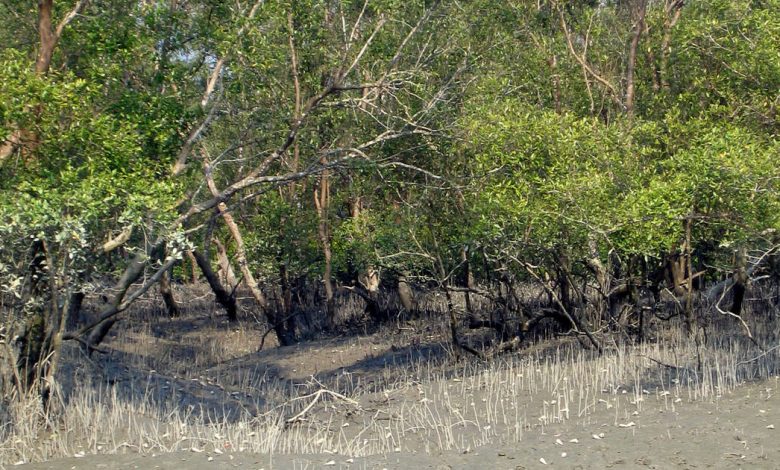Loss And Damage In The Sundarbans
Around half the population here lives below the poverty line

The Sundarbans are a cluster of low-lying islands in the Bay of Bengal, spread across India and Bangladesh. The region is recognised internationally for its unique biodiversity and ecological importance – including the single largest mangrove forest in the world, encompassing a total area of 10,200 km2.
The Sundarbans ecosystem offers a wide range of vital ecological services, including cyclone protection for millions of people, wildlife habitat, food and natural resource provision, and carbon sequestration. It is also home to about 7.2 million people (4.5 million in India and 2.7 million in Bangladesh), including some of South Asia’s poorest and most vulnerable communities. Around half the population lives below the poverty line.
In 2015-16, the total area of the Sundarbans had shrunk by 210 km2 since 1967, and by 451 km2 since 1904. This declining trend holds true whether the Indian and Bangladesh portions of the Sundarbans are considered separately or grouped together. The main reason is the surrounding sea level, which is rising more than twice as fast as the global average. Satellite imagery shows the sea level has risen in the Sundarbans by an average of three centimetres a year over the past twenty years, and the area has lost almost 12% of its shoreline in the last forty. In addition to sea level rise, a gradual reduction in sediment flow from rivers to the Sundarban region has resulted in loss of land mass.

Where land is not yet lost, frequent flooding with salty water from rising sea levels and extreme weather events renders affected land unproductive. Increasing water and soil salinity are also caused by climate-induced changes in temperature and rainfall, along with reduced freshwater flows from the Himalayas in the dry season. In the last 40 years, approximately 25% of glacial ice has been lost in the mountain range, posing a significant risk to stable and reliable freshwater supplies to major rivers, such as the Ganges and Brahmaputra, that flow into the Sundarbans. In the Sundarban region, water and soil salinity has increased dramatically, with projections that many parts of the region will reach near ocean-level salinity by 2050.
In Bangladesh, soil salinity increased six times, and up to fifteen times in certain areas, from 1984 to 2014. The salinisation of soil ruins crops and devastates farmer livelihoods. Research estimates a one metre increase in sea level would cause losses as high as USD 597 million in agriculture from salinity-induced land degradation. Some villages no longer support agriculture due to recurrent salt water inundation.
Due to a lack of employment opportunities, most are dependent on the land and natural resources that are increasingly being depleted by climate change. The Sundarban region, home to 7.2 million of the world’s most vulnerable people and the largest single mangrove forest in the world, is increasingly at threat from catastrophic impacts of climate change. Climate change is contributing to the absence of employment opportunities, the destruction of property from extreme weather events and the loss of vital mangroves and land from sea level rise. With homes and livelihoods under threat, many are left with no choice but to migrate elsewhere.
The increasing scale and frequency of climate impacts mean the limits of adaptation have already been reached in many cases. The most affected argue that the extensive loss and damage needs to be addressed by those responsible with the financial means to do so. Most rely on subsistence agriculture, supplemented with fishing, crab and honey collection. Millions are unable to meet their basic nutritional requirements, leading to health issues such as anaemia, malnutrition and childhood stunting. At the same time, climate impacts are exacerbated by other factors, such as poverty, lack of livelihood options, reliance on land, uneven land ownership and limited government support.
The Sundarbans were declared a reserve forest before the partition of India in 1875, and UNESCO declared the Indian and Bangladesh portions of the Sundarbans World Heritage Sites in 1987 and 1997, respectively. The region is also recognised under the Ramsar Convention on Wetlands. Despite this recognition, including conservation obligations Under international conventions and treaties, the Sundarbans are under threat from climate change, along with a combination of natural factors and human impacts.
The writer of this article is Dr. Seema Javed, a known Environmentalist, Journalist and Communications Expert




